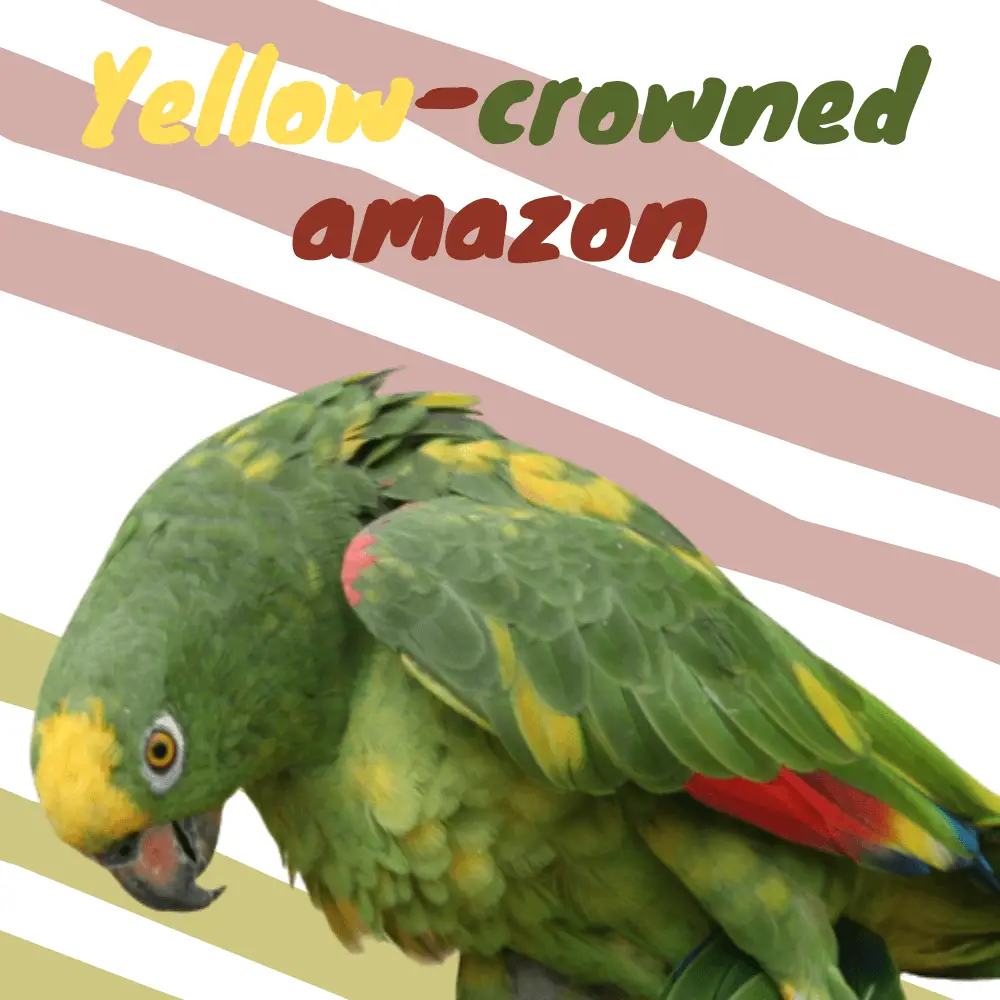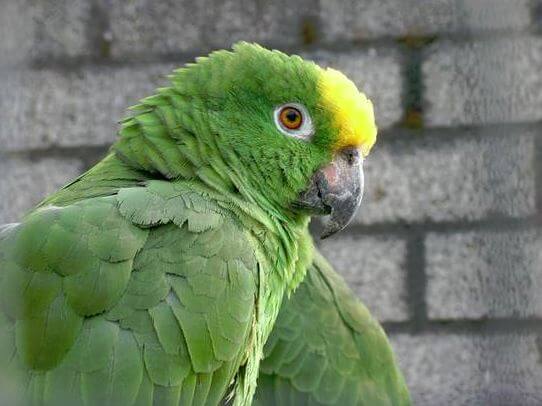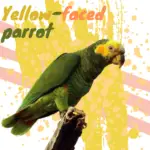
The Yellow-crowned Amazon is a bird of the Psittacidae family, whose scientific name is Amazona ochrocephala, and in English, it is called the Yellow-crowned Parrot.
It is popularly known as parrot-of-Suriname, airuapara, ajuruapara, and ajeruapara. When properly cared for, their life expectancy reaches 80 years. See other beautiful parrots.
Physical characteristics of the Yellow-crowned amazon
It measures 35 centimeters in length, weighing around 405 to 460 grams. There is no sexual dimorphism. The predominant plumage is green, paler, and yellowish on the chest. Yellowish head.
The plumage of the shoulders is red. Green tail with yellowish edges. Horn-colored beak with orange on the sides of the upper jaw. Orange irises and light gray feet.
They are birds of easy domestication, so they are very popular as pets. They are intelligent and perceptive and reproduce sound in repetition, such as human speech, ringing, ringing, etc.
Yellow crowned amazon care
We house these amazons, already as young birds, in colonies in spacious aviaries 3.6m wide x 5m long x 3m high. A dozen birds can in this way form couples themselves.
Social interaction is in our opinion very useful and stimulates the birds in search of partners. They will show the behavior of a real swarm.
You can recognize the birds individually by the quantity and the pattern of the yellow color. Each bird is of course ringed with a closed ring and if they should lose it they will be chipped with a microchip.
Of course between the birds, there is sometimes a little disagreement but this does not happen often and very rarely if ever ends in bloodshed. In these group aviaries, there will be no breeding

Our aviaries are not completely covered so that the birds can take advantage of the rain and the sun. After a good shower on a hot summer day, we see them all hanging on the fence or on a perch cleaning their feathers.
They are real water hens! We have also provided sprinklers for hot days without natural rain. There are about as many feeding places as there are pairs. Each couple finds its place in the aviary.
Each aviary also has a small night lamp so that the birds find their place when they have been frightened at night by an owl, cat, fox, or marten. Most perches are firmly fixed but there are also swings provided. To satisfy their desire to gnaw, branches are regularly offered.
When the breeding period approaches, the birds are housed separately in pairs in a “breeding aviary”. After the breeding season, they are again moved to the group aviary.

The birds are always moved together and at the same time. In this way, conflicts are avoided. Over the years we have noticed that birds that are kept in flocks are of good weight, healthy, feathery, and exhibit behavior that closely approximates that of birds in the wild.
Yellow crowned amazon lifespan
Amazon parrots are increasingly popular pet birds. Known for their very playful nature, amazons demand attention. With a lifespan of 80 years (average of 40 years depending on their habitat), amazons are loyal to their master.
Yellow crowned amazon diet
Yellow-crowned Amazon receive fresh food twice a day. Morning feeding consists of a mix of fruits and vegetables: cactus fruits, peppers, grapes, peas, corn, beetroot, soaked or sprouted seeds, and whatever is growing at that time in the fruit and vegetable garden. vegetables. During the breeding season, we occasionally give extra calcium in the mash.
Evening feeding consists of pellets, sometimes accompanied by a few nuts. You definitely shouldn’t go overboard with the nuts as amazons tend to get too oily.
The water is changed every morning and afternoon. During breeding, we give a little more fruit and vegetables depending on the number of young in the nest and their age.
In nature, they feed on fruits, seeds, nuts, berries, flowers, and sprouts. In captivity, in addition to commercial food for parrots, fruits such as papaya, bananas, guava, fresh coconut, oranges, seeds such as millet and sunflower seeds, vegetables such as cabbage, mustard, and cabbage can be offered.
Distribution of the Yellow-crowned amazon

The species can be found in Brazil, in the states of Pará, Acre, Amazonas, Rondônia, and northern Mato Grosso. Also found from Mexico to Colombia, Peru, and Bolivia.
Its habitat is in dry deciduous forests at the edge of the field, humid, semi-humid forest, swamps, and buritizais. Its habitat has been gradually destroyed and its threat of extinction has been of little concern.
Meet Elmo, the Yellow Crowned Amazon Parrot! | Parrot Partner Canada
SOURCE:Parrot Partners Canada
Yellow-crowned amazon reproduction
The Yellow-crowned amazon is sexually mature at 3 years of age, although a pair do not begin breeding until both birds are 4 to 5 years old.
Despite this, with us, the young pairs are nevertheless already taken out of the group aviary and housed in the breeding aviary so that they can already get used to it.
When the birds are transferred to the rearing aviaries, each bird is weighed and each ring is checked. All couples move and this usually happens in mid-January.
The behavior of the birds changes very quickly: both males and females call more often, the pupils widen and they become more aggressive. The contrast with the calm and kind birds that are in the group aviary cannot be greater!
They are monogamous. Its breeding season is from December to May. Sexual maturity is reached at 3 years of age. Nests in termite holes in palm trees and hollows. They lay 2 to 4 eggs that are incubated for 26 days and the chicks remain on average 60 days in the nest until the first flight.
Yellow-crowned amazons are generally good parents so hand-rearing is not imperative. They are also not the most difficult to raise by hand although it is never a job for a beginner without guidance.
Young people grow fast and before you know the curiosity to recognize the world around them is already there. During this period you can teach them to know different games and different ways of feeding. The sooner they know this the better!
Yellow crowned amazon price
between 850$ and 1000$
Yellow-crowned amazon singing




















